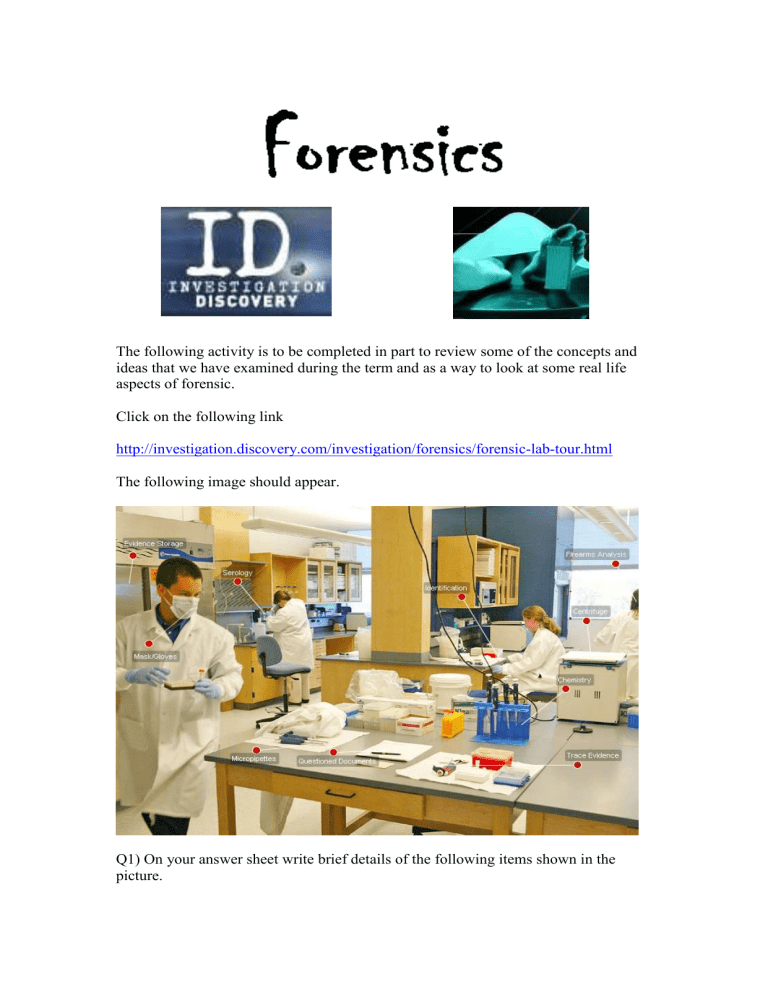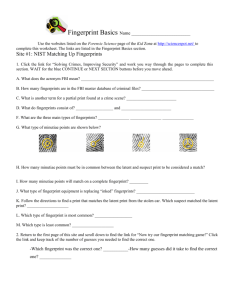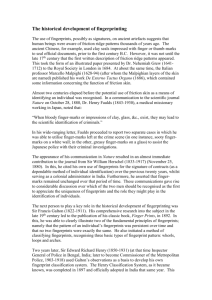ForensicsWebQuest_09

The following activity is to be completed in part to review some of the concepts and ideas that we have examined during the term and as a way to look at some real life aspects of forensic.
Click on the following link http://investigation.discovery.com/investigation/forensics/forensic-lab-tour.html
The following image should appear.
Q1) On your answer sheet write brief details of the following items shown in the picture.
a) Serology b) Centrifuge c) Chemistry
The Crime Scene:
Click on the following link http://investigation.discovery.com/investigation/forensics/crime-scene/crime-scenetour.html
You should see the following photograph.
Q2) On your answer sheet write brief details of the following items shown in the picture. a) Gun shot residue
b) Bullets c) Prints
TV vs Reality
Click on the following link. http://investigation.discovery.com/investigation/forensics/reality/reality.html
Q3) Read the material presented here. In the space below very briefly summarise the differences between TV CSI and real life.
The Clean-Up
Click on the following link http://investigation.discovery.com/videos/crime-scene-cleanup-videos/
Here you will see a number links to a series of videos. The videos are about a cleanup service in New York that cleans up after a person’s death. The video focuses particularly on the death of people that live alone and who may not be found to well after the time that death has occurred. For the present look at two episodes of the video, He Died Alone and Blood. After you view He Died Alone the second video should start automatically.
Q4) Briefly summarise some of the dangers associated with blood after death has occurred.
FingerPrints:
Our focus for this week’s work will be on fingerprints. Later in the week you will be examining your own prints and investigating techniques that make latent fingerprints visible.
View a video on fingerprints by clicking of the following link, http://investigation.discovery.com/videos/forensics-videos/
Answer the following questions concerning this video.
Q5) What is the usual method for detecting fingerprints on objects?
Q6) Ninhydrin and silver nitrate are use to detect prints on paper. What specifically do each of these chemicals react with?
Q7) Superglue is used to detect fingerprints. What does the superglue react with to produce the print and how is this technique carried out?
Q8) Is fingerprint analysis still an important technique or has it been superseded by more modern techniques?
History of Fingerprint Analysis:
Click on the following link and answer the questions concerning fingerprints. http://onin.com/fp/fphistory.html
Q9) What techniques were used in ancient times to ensure that people could be identified?
Q10) Why was the development of photography not the complete answer to the criminal identification problem?
Q11) Around 1870, French anthropologist Alphonse Bertillon developed a system devised a system to measure and record the dimensions of certain bony parts of the body. Although initially successful in being able to identify individuals uniquely it fell into disrepute. What was the reason for this?
Click the following link to read further details of this system and answer the appropriate question. http://criminaljustice.state.ny.us/ojis/history/bert_sys.htm
Q12) Which country was the first to introduce the Bertillon System and in what year?
Matching Finger Prints:
Click on the following link to examine the process of fingerprint matching. http://www.nist.gov/public_affairs/licweb/fingerprint_int/nist_fingerprint.html
After the introduction click on the link
Q13) What are the three basic types of fingerprint patterns?
Allow the interactive to run.
Q14) The basic patterns are then further dissected into a minutiae map.
What are the four minutiae aspects that are identified in the presentation?
Q15) Compare and contrast the taking of fingerprints now and in the past.
Check your skills in identifying your fingerprints by competing the Test Your Skills
Section.
Finally looks carefully at your own fingerprint and decide which board category you belong to.
Q16) To which category do your fingerprints belong?
Click on the following link to play the Fingerprint Memory Game http://investigation.discovery.com/interactives/fingerprint-memory/easy.html
This is the easy version.
Q17) Record your best time here.
For a challenge try the harder version. Click on the following link. http://investigation.discovery.com/interactives/fingerprint-memory-hard/hard.html
Q18) Record your best time here








